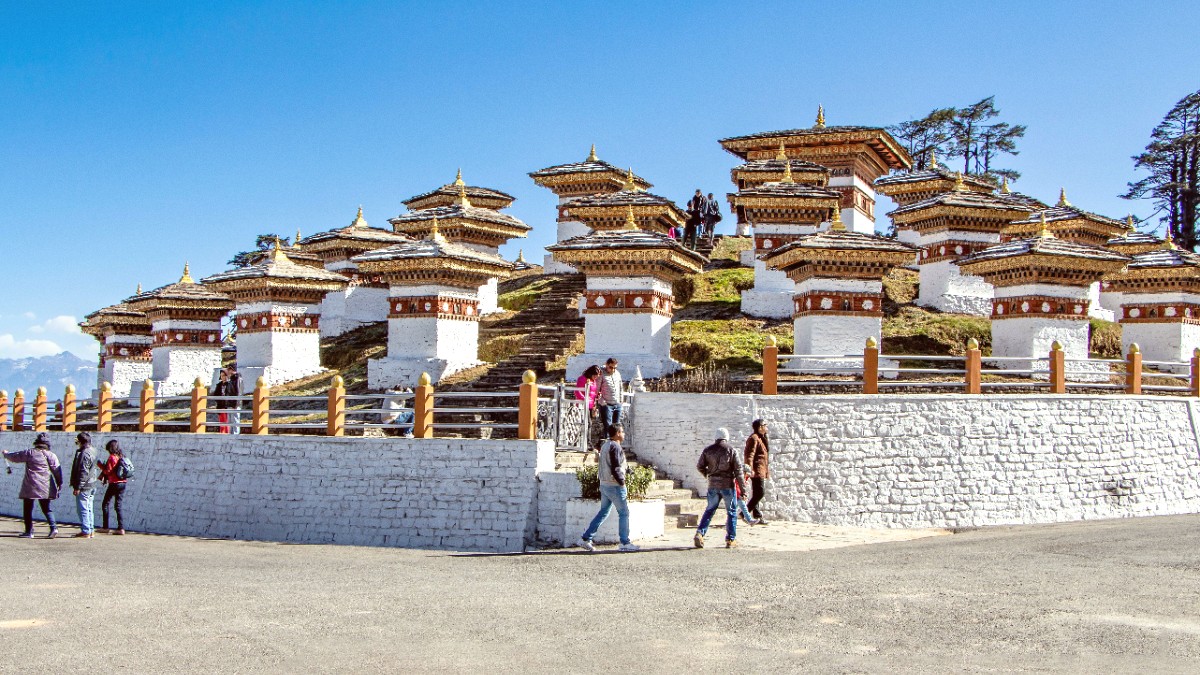
Bhutan
Punakha served as the capital of Bhutan until 1955. It sits at a lower elevation (around 1,200 meters / 3,900 feet) than Thimphu, resulting in a warmer climate. It is famous for the stunning Punakha Dzong, one of the most beautiful and historically important dzongs in Bhutan.
This magnificent fortress stands at the confluence of the Pho Chhu (male) and Mo Chhu (female) rivers. Punakha is also home to Chimi Lhakhang, known as the Temple of Fertility.
Beyond Punakha, other valleys present unique landscapes and cultural insights, ideal for further exploration.
Paro, home to Bhutan’s only international airport, is another historically significant valley. It houses the iconic Paro Taktsang (Tiger's Nest Monastery).
Haa Valley offers a picturesque and serene experience, less visited by tourists than Paro or Punakha. It is known for its pristine natural beauty and unique local culture.
Bhutan’s natural beauty extends beyond Thimphu, presenting peaceful escapes into pristine environments.
Adorned with 108 memorial chortens, Dochula Pass (3,100m / 10,200ft) presents breathtaking panoramic views of the Himalayas on clear days.
This broad glacial valley offers a habitat for the endangered Black-necked Cranes during winter (mid-October to mid-March).
Situated about an hour from Thimphu, this garden showcases Bhutan’s rich biodiversity, specifically its rhododendron species.
Phobjikha is a significant natural attraction. It is a longer trip (3-4 hours drive each way from Thimphu) but rewards visitors with unique natural experiences.
This peaceful garden showcases Bhutan’s rich biodiversity, offering a serene spot for leisurely walks and appreciating nature.
Beyond the main city, cultural excursions into Bhutanese villages and less-traveled sites present intimate and authentic experiences.
A visit to a traditional farmhouse allows for a firsthand experience of rural Bhutanese life. These visits are typically arranged by your tour operator.
As you drive between Thimphu and other valleys like Punakha or Paro, your guide stops at small settlements or viewpoints overlooking terraced rice fields.
Many smaller lhakhangs (temples) and monasteries dot the landscape around Thimphu, offering a quieter, more spiritual experience.
These cultural excursions present opportunities for a connection with Bhutanese life, away from main tourist routes.
Some tour operators arrange homestays for an immersive cultural experience, sleeping in traditional houses.
Depending on the season, witness or participate in agricultural activities like rice planting or harvesting.
Opportunity to try freshly prepared local dishes in a village setting.
Bhutan's geography and culture encourage longer explorations beyond the western valleys.
Spend a night in Phobjikha for more time for nature walks and birdwatching.
A quieter, off-the-beaten-path experience to explore its serene beauty and villages.
An extra night in Punakha for more exploration of surrounding villages or river activities.
Begin in Paro, then Thimphu, Punakha, Phobjikha, and fly to Bumthang (or drive) for main highlights and spiritual core.
Start from western border (Phuentsholing) or Paro, traverse through major valleys, and continue to Eastern Bhutan. This requires 2-3 weeks.
Frequently combined with tours to Nepal (Kathmandu) or India (Delhi, Kolkata) due to proximity and direct flight connections.